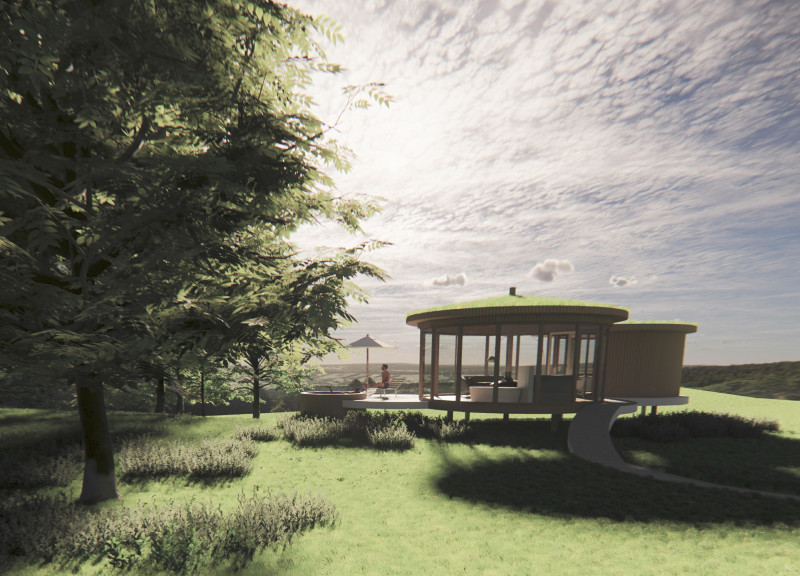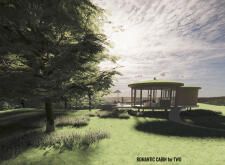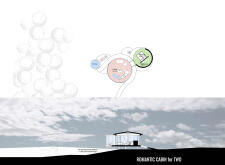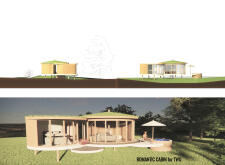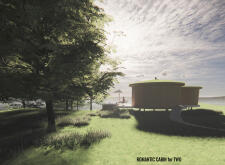5 key facts about this project
The "Romantic Cabin for Two" is an architectural project designed to provide an intimate retreat for couples seeking a connection with nature. This small dwelling harmonizes with its surroundings while prioritizing comfort and functionality. The design employs a central circular theme, promoting unity and connection while facilitating efficient space usage.
The layout incorporates distinct areas for living, sleeping, and bathing, designed with an emphasis on privacy and interaction. Large windows blur the boundary between interior and exterior, enhancing the occupants' experience of the natural environment. The project effectively navigates the challenges of creating a private space in a scenic setting, utilizing strategic placement to ensure seclusion while maximizing views.
Unique Design Approaches
One notable aspect of the Romantic Cabin is its circular layout, which fosters social interaction and intimacy. This approach deviates from traditional rectangular layouts, creating a more organic flow between spaces. The choice of materials, primarily natural wood and glass, ensures that the cabin blends seamlessly into its landscape while providing warmth and comfort.
Incorporating a green roof is another distinctive element that enhances sustainability and integrates the structure with its environment. This feature not only reduces the building's visual impact but also contributes to local biodiversity and insulation properties. The cabin’s hot tub area extends the living space outdoors, reinforcing the project's objective of offering an immersive connection to nature.
Sustainable Materials and Functional Design
The project employs a range of sustainable materials, including natural wood for cladding and structural elements, along with glass fixtures that offer transparency and light. The selection underscores a commitment to environmental responsibility while ensuring durability and aesthetic appeal.
This cabin's design addresses functionality through its careful spatial organization, allowing for comfortable living without compromising on intimacy. Outdoor spaces are well integrated with the interior layout, promoting interaction with the surrounding landscape. The seamless transition from indoor to outdoor areas, facilitated by expansive decking, invites occupants to experience the natural world fully.
Overall, the Romantic Cabin for Two serves as a case study in effective architectural design that balances intimacy, functionality, and sustainability. To explore specific aspects of the project, including architectural plans, sections, and detailed design concepts, readers are encouraged to delve deeper into the project presentation.


